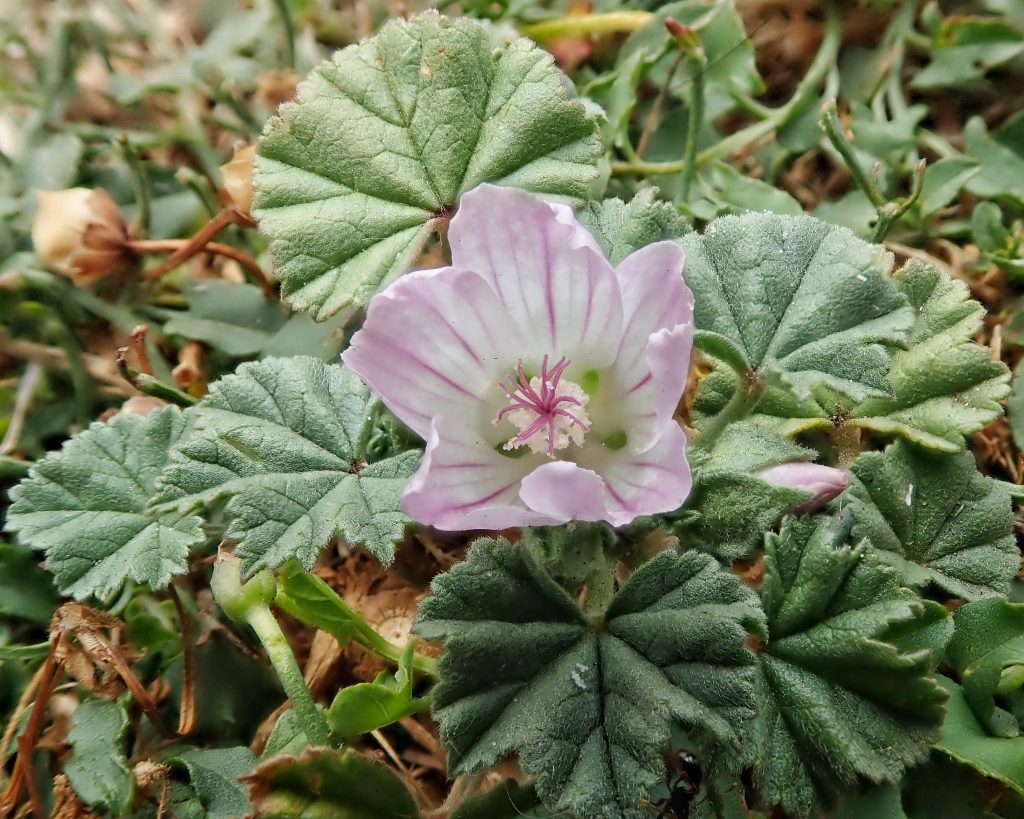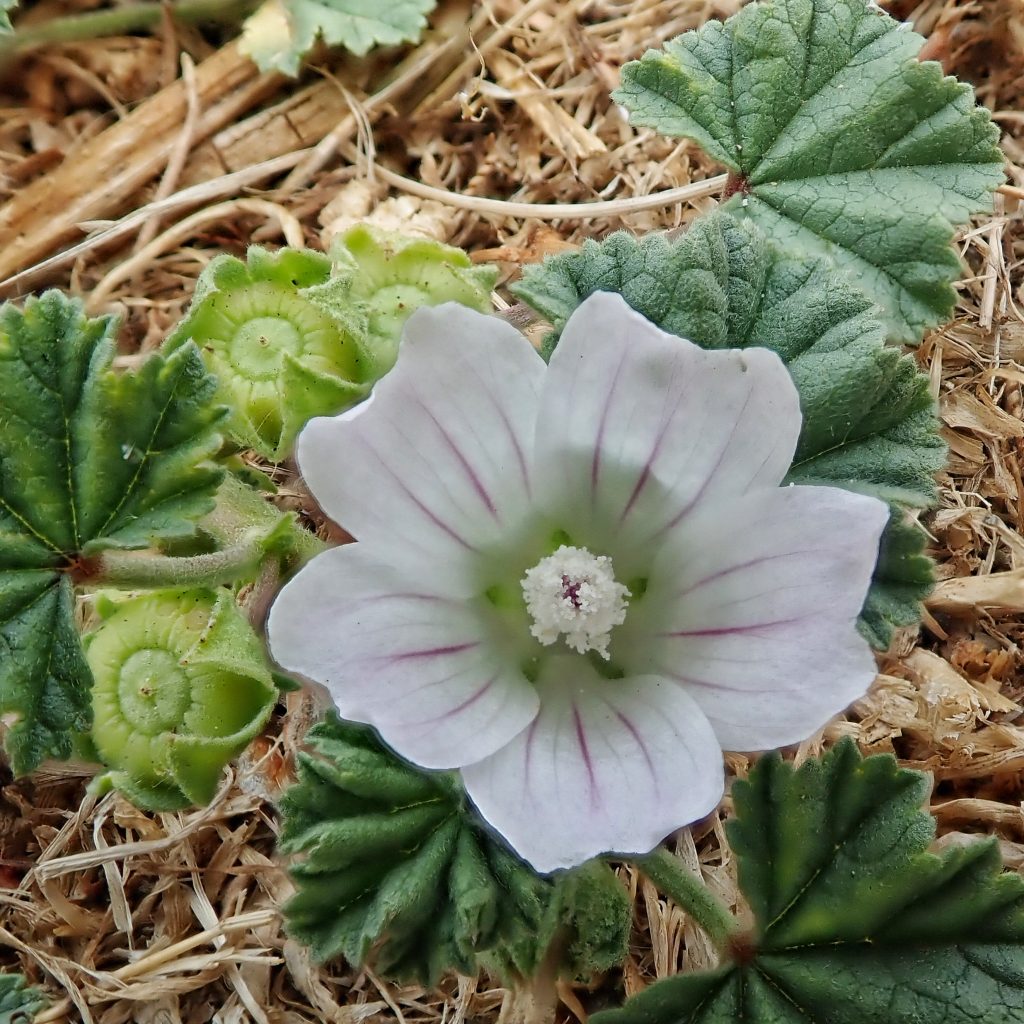
I love weeds! Possibly I’d feel different if I was a gardener, but since I’m not, and I live in an urban area where, most of the year, the only things blooming that were not planted are those unwanted, marginalized, and plebeian opportunists and squatters of disturbed ground, I can feel free to appreciate the often beautiful wildflowers that many people consider to be weeds. And Malva neglecta, a hardy survivor, with handsome foliage and a pretty flower, grabs my eye and draws my respect every time I see it.
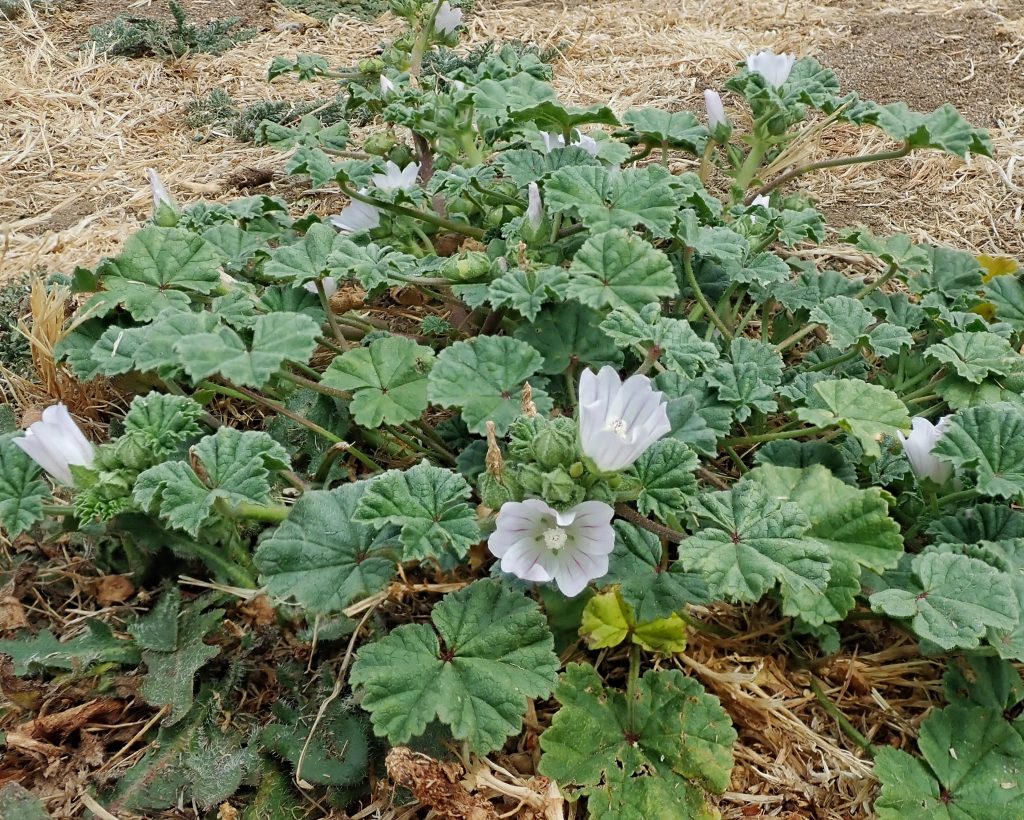
The most accepted common name for this member of the family Malvaceae is dwarf mallow, but it is also called common mallow, roundleaf mallow, buttonweed, and, the name I always use, cheeseweed (except that that one more properly belongs to M. parviflora, though Malva sp. as a whole are often called the cheeseweeds), because of the resemblance of the mature, round, lined seed to a wheel of cheese.
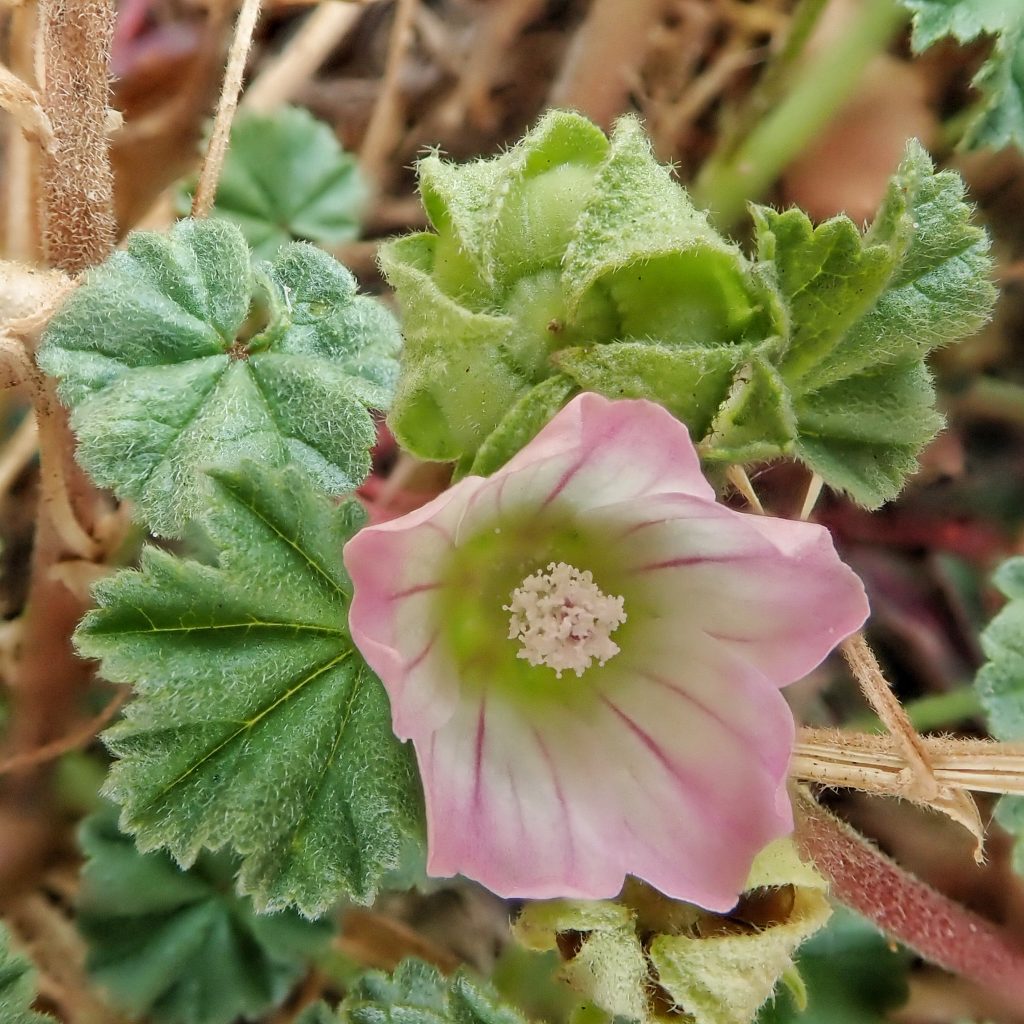
Because it is not native to our area I have no usages by our indigenous cultures to report, but people have been utilizing this plant for a very long time. The leaves and shoots can be eaten raw, and are also cooked as greens or used to thicken soups. The seeds can be eaten raw or roasted, but they are small and it would take hundreds to make a meal. The leaves can be used for a tea, and the roots can be boiled and strained to provide a substitute for egg whites for baking purposes.
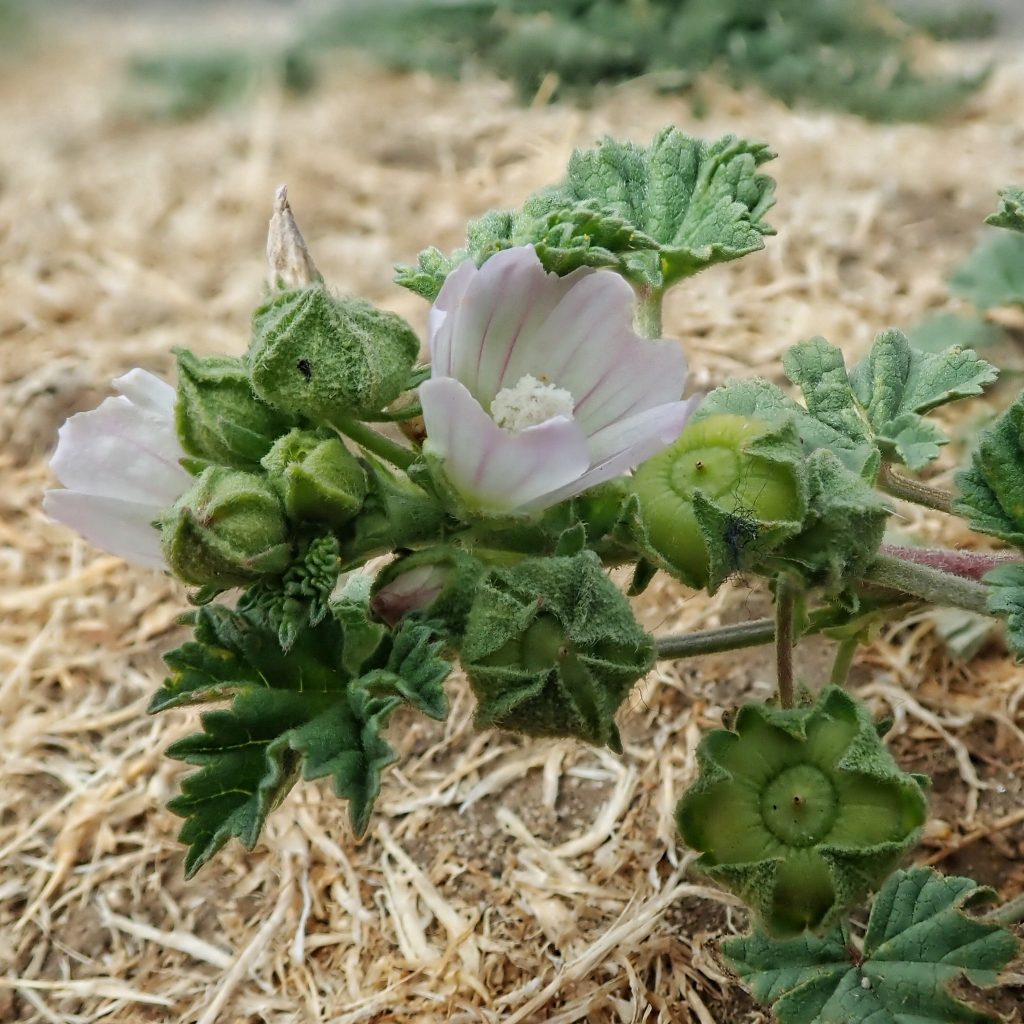
Decoctions of all parts of the plant have been used as anti-inflammatories, laxatives, wound poultices, and expectorants, among other things. However, caution is advised before ingesting this plant, because, growing in wastelands and other disturbed areas, it is often subjected to pollutants, pesticides, and other toxins, and even with thorough cleaning may contain high levels of nitrates and other undesirable chemicals.
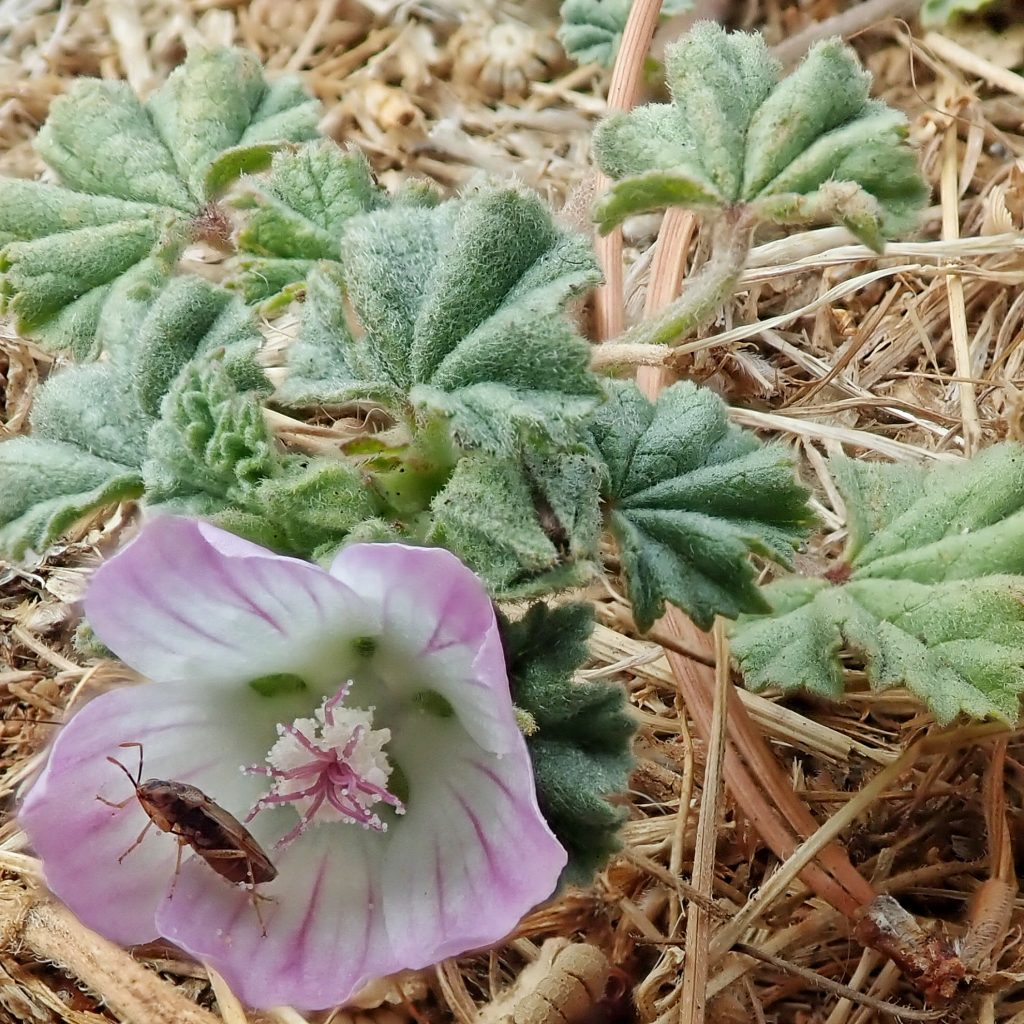
With the exception of the plant hopper in the picture above, these photos don’t do justice to the number of insects that are usually found at their flowers. This is primarily because of the fact that when I found these photogenic patches on one of my neighborhood walks, all I had with me was my little macro-camera, and the disturbance of me dropping to my knees to take photographs spooked most of the bees, flies and tiny beetles that were feeding there.
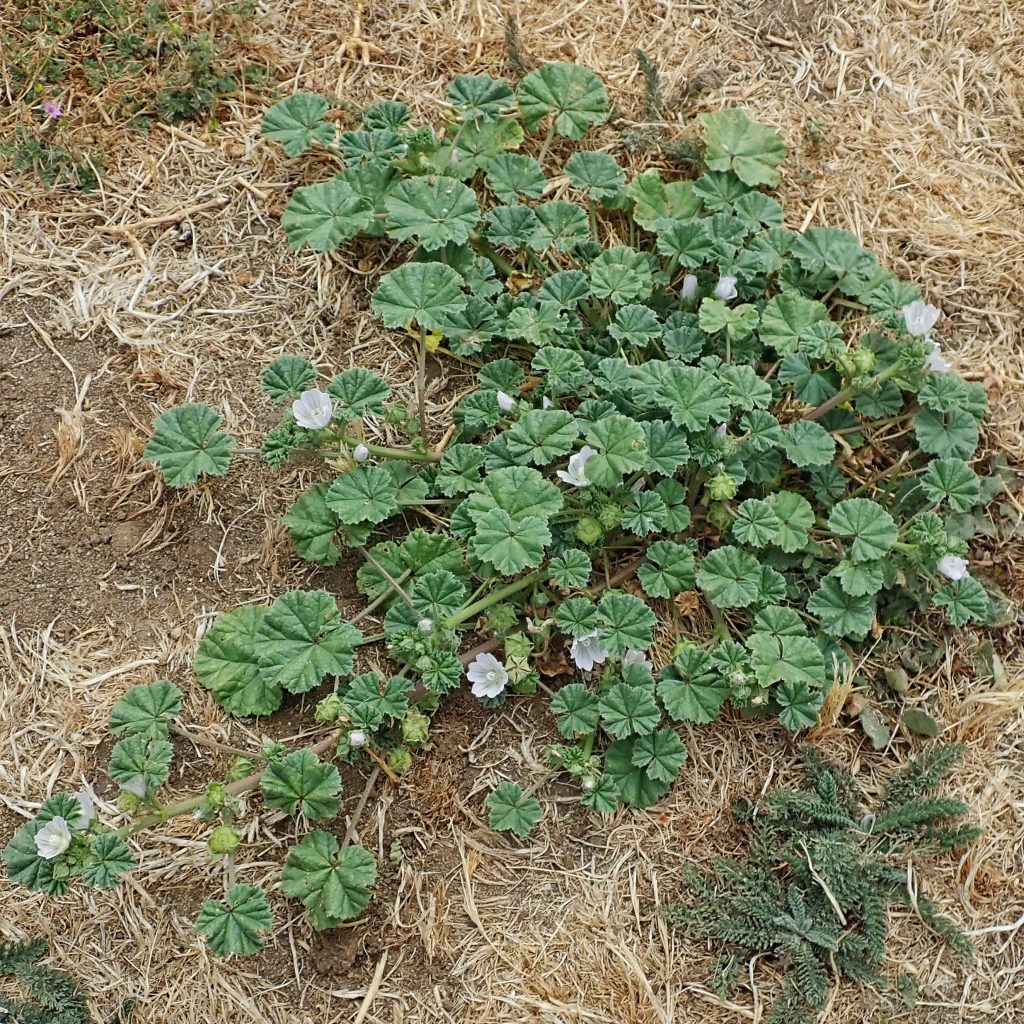
Description-Short (usually less than 12” high) plant with hairy, prostrate branches, wrinkled, slightly lobed, round to reniform leaves, and white to pale purple flowers with darker lines; flowers form near leaf bases, and have petals 6-15mm long; seeds green to brown, round and lined, 6-8mm in diameter.
Similar species– Malva sylvestris has larger flowers (petals 1.5-3cm long); M. parviflora has smaller flowers (petals <6mm long).
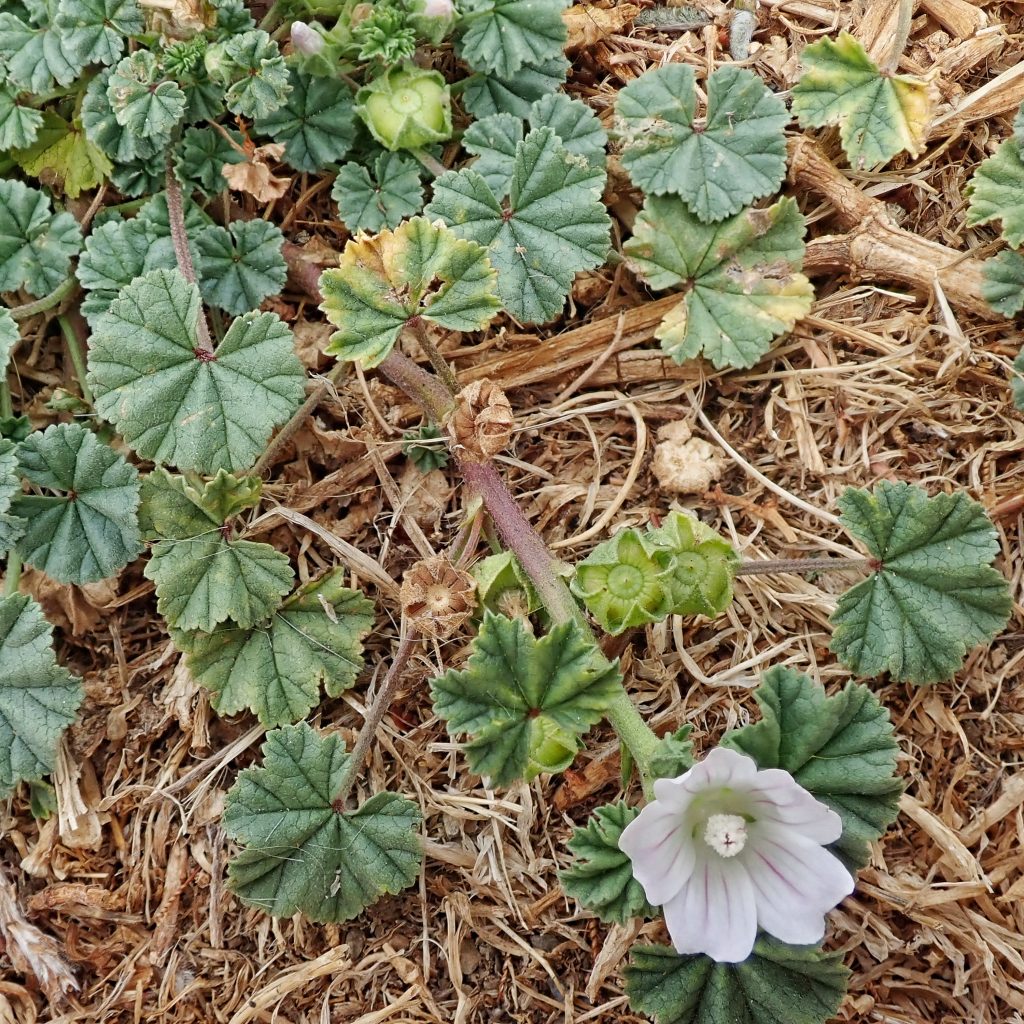
Habitat-Fields, forest openings, roadsides, fallow agricultural ground, and other disturbed ground.
Range-Eurasian native; naturalized throughout North America; region wide.
Reproductive timing– Blooms May to September
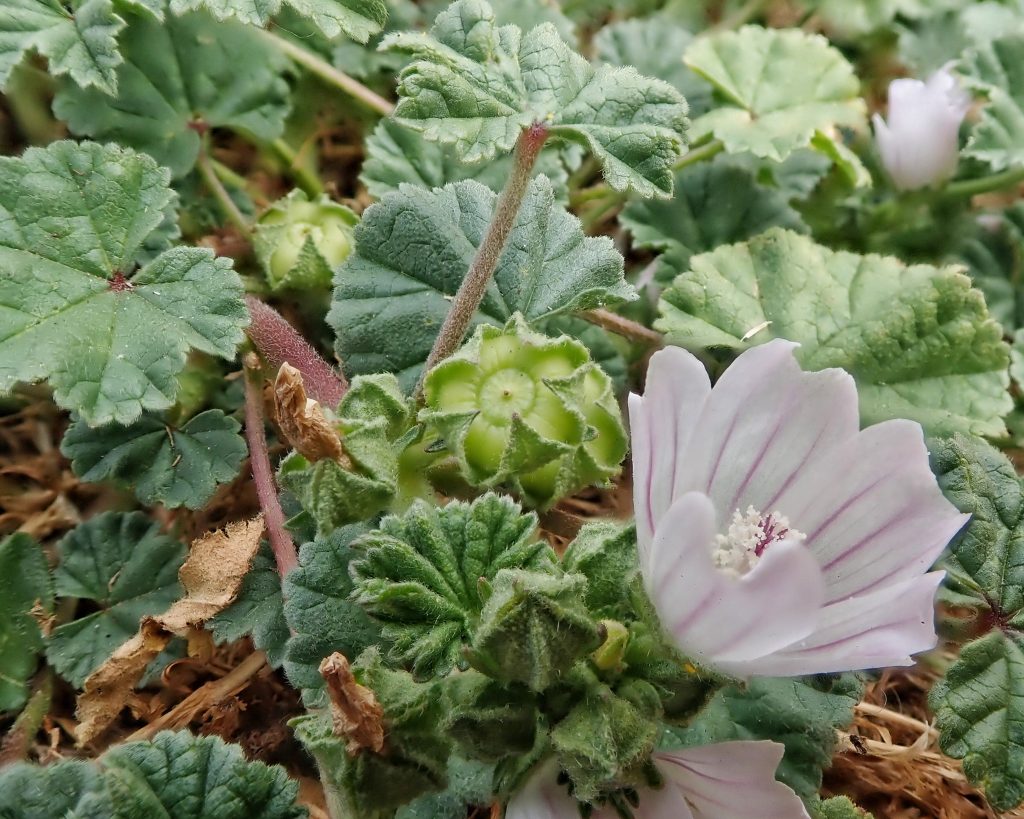
Eaten by-The flowers are visited by a wide variety of Hymenoptera, Diptera, Lepidoptera, Hemiptera, and Coleoptera; known to be a larval host to the moth Udea profundalis, and the butterflies Pyrgus communis, Strymon melinus, and Vanessa cardui, but the list probably should be much longer than this because there are large numbers of leaf beetles, stink bugs, and leaf mining flies and moths that utilize other members of this genus; rabbits and other herbivores eat the foliage, and birds eat the seeds.
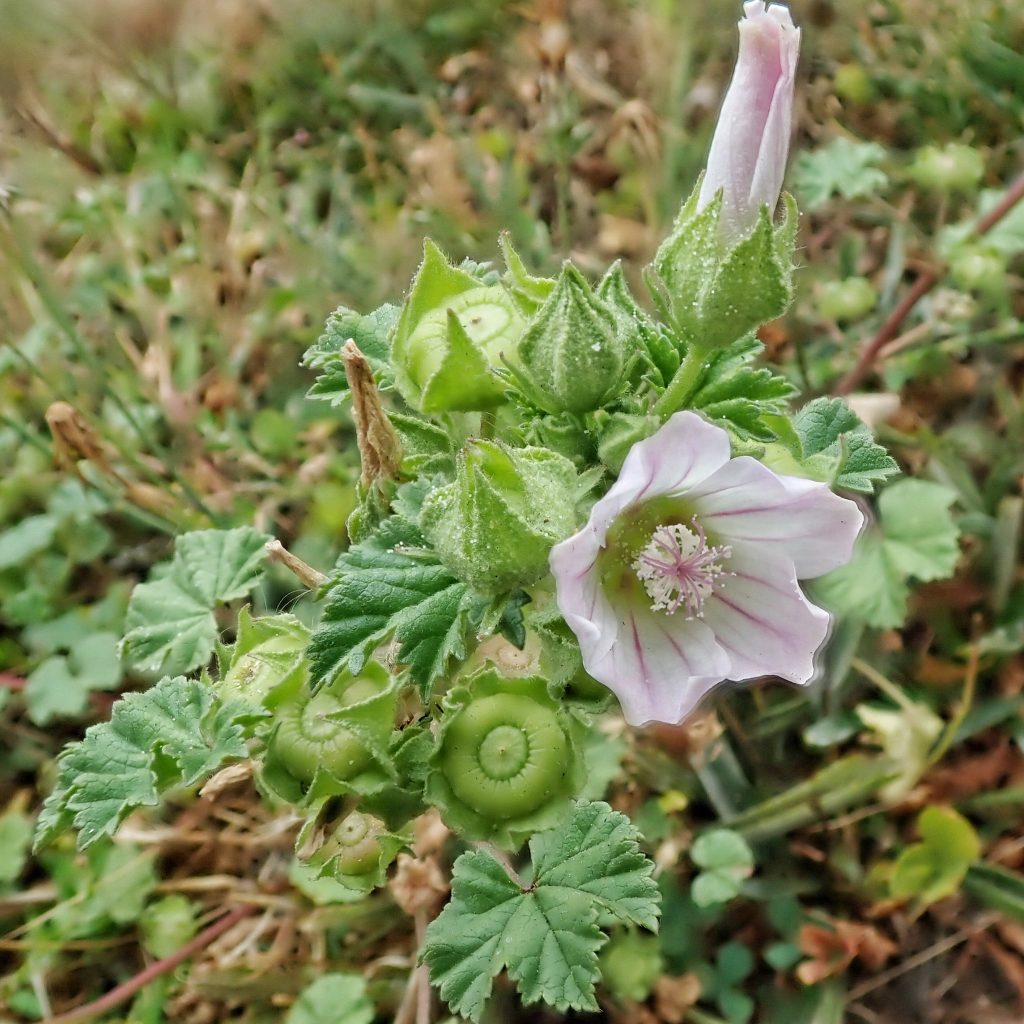
Etymology of names–Malva is from the Latin word for the mallows, which came from the Latin word for ‘tender/soft’ and references the skin soothing qualities of the leaves. The specific epithet neglecta is from the Latin for ‘disregard’ and refers to its propensity for growing in neglected, waste, and disturbed ground.
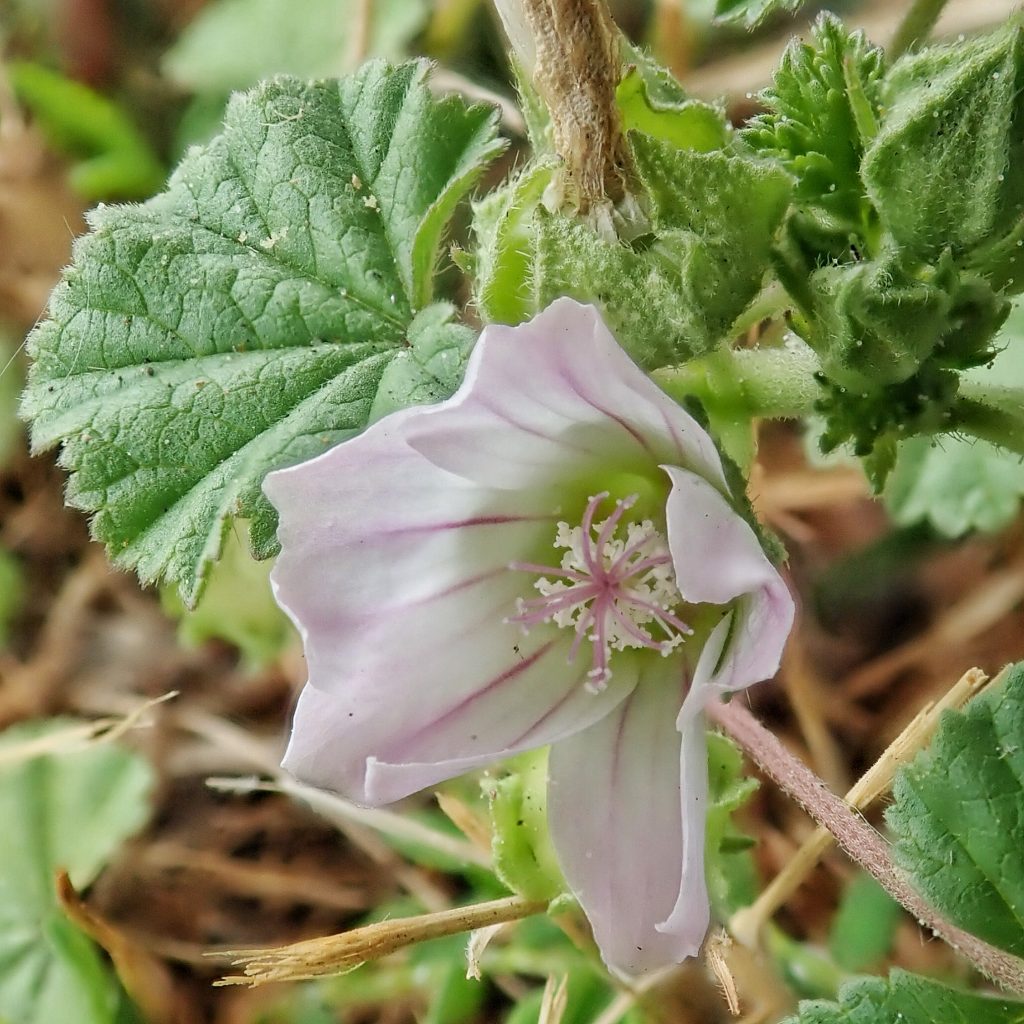
https://www.purduelandscapereport.org/article/spotlight-on-weeds-common-mallow-malva-neglecta/
https://pfaf.org/user/Plant.aspx?LatinName=Malva+neglecta
https://www.illinoiswildflowers.info/weeds/plants/cm_mallow.htm
http://biology.burke.washington.edu/herbarium/imagecollection/taxon.php?Taxon=Malva%20neglecta
